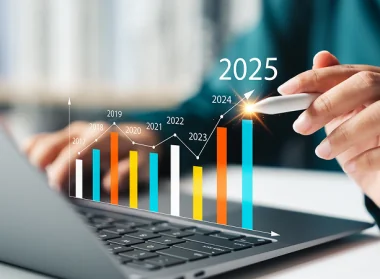The supply chain management (SCM) process is an essential part of business management.
Inefficiencies in supply chain processes create issues within the supply chain network (SCN) that have a ripple effect throughout the entire organization, with the potential to affect profits at a number of key points across supply chain operations.
Understanding each part of SCM ensures you can identify and remedy any issues to keep everything streamlined.
Supply chain managers take charge of the entire process to ensure everything makes it to the end user as quickly and efficiently as possible.
The Supply Chain Management Process Defined
The supply chain management process covers the design, preparation, administration, and tracking of all activities related to the supply chain.
The SCM process can be broken down into eight clear parts, each with multiple key business processes to consider:
- Strategic Planning
- Demand Planning
- Supply Planning
- Procurement
- Manufacturing
- Warehousing
- Order Fulfillment
- Transportation
Strategic Planning
In this process, you’re focused on designing, evaluating, and optimizing the supply chain model before it is implemented in your business.
Here, you examine each area of the supply chain, including the locations, resources, products, and transportation so you can devise the solution that works best for your business.
You’ll also work on strategic sourcing here, so you can find your core set of suppliers to establish relationships with.
You’ll define the parameters to support your procurement processes.
In this stage, you’ll use purchasing statistics and vendor analysis to help evaluate potential suppliers, so you can more easily decide between multiple options.
Performance management will enable your strategic sourcing, as long as you have access to your spend and contract analytics data.
Demand Planning
In demand planning, you’ll address forecasting, lifecycle planning, promotion planning, and consensus demand planning.
Proper demand management ensures you’re producing enough product to keep your customers happy, but not producing so much you’re left with too many finished products sitting collecting dust in inventory.
Forecasting relies on current available historical data to predict future demand, so the more data you have, the more accurate your forecasting will be.
You can create forecasts using various methods, including statistics, human judgment, causal analysis, or some combination of them all.
Forecasting is particularly difficult when it comes to a new product, but market research can assist with forecasting until actual data becomes available.
In lifecycle planning, you’ll address the product lifecycle. It’s simulated using forecasting data and factors throughout the cycle.
Promotion planning allows you to plan product promotions or events that remain separate from your other your forecast data.
Calculate the promotion effect with casual methods using the measure of past promotion impact, then project it into the chosen periods of the future.
Use promotion planning to address one-time events, or repeated promotions such as contests, trade fairs, sponsorships, or specialty advertising.
Consider how gaming console manufacturers such as Sony, Microsoft, and Nintendo always place their products on sale for the holiday shopping season.
These promotions are designed to appeal to customers in the market for a new console or games for their families but also aim to increase overall sales for the year.
As you plan promotions, consider how certain holidays or times of year will affect your consumer demand.
Electronics such as tablets and computers are often hot holiday gifts as well, but also tend to sell more during back to school season.
After you’ve addressed the demand process up to this point, you’ll turn to consensus demand planning that creates the full demand plan by combining all information from your forecast, sales plans, promotion budgets, and more.
Supply Planning
This process addresses safety stock planning, supply network planning, outsourcing, distribution planning, customer collaboration, and supplier collaboration.
In safety stock planning, you must devise a plan that ensures you can have the necessary level of stock inventory at all of the locations that carry your product.
You should have enough stock available to meet your targets, and if you do not, you could find yourself scrambling get the necessary supplies to meet your demand.
Supply network planning involves calculating the number of products you need to be delivered to each location in your distribution network to meet customer demand and maintain your desired service levels.
Continuing with the gaming console example from promotional planning, each manufacturer sends a certain number of consoles to each store in their network.
Stores that serve smaller areas will naturally receive less stock than those in larger areas. Stores serving areas with higher concentrations of gamers will receive more stock in an attempt to better match demand.
Your outsource planning will factor in any third parties, or subcontractors, you will use to address manufacturing or supply.
Distribution planning aims to provide you with the best possible short-term strategy to distribute your available supply to meet demand and replenish stock in all locations where it is needed.
If for instance, one of the major retailers that sell the gaming consoles sells out of Microsoft’s product, then Microsoft uses their distribution planning strategy to figure out how to get that retailer’s location restocked with additional consoles as quickly as possible to keep sales moving.
In the customer collaboration process, you allow vendors to take responsibility for planning inventory levels at their location.
This means gaming console manufacturers let each major retailer decide how many consoles of each type they want to stock at each of their stores.
In the supplier collaboration process, you allow suppliers to receive demand and stock data, to perform replenishment tasks for you, the manufacturer.
Supply and demand planning is critical because it dictates your procurement needs. Though each stage of the supply chain is important, what you do in these stages ripples through the rest of the chain.
Procurement
In the procurement process, you’ll handle purchase order processing, receipt confirmation, and invoice verification.
Supplier relationship management is paramount, because if you run into issues with your suppliers, you may not be able to generate enough finished goods to keep your business running.
With purchase order processing, you’ll address the direct procurement requirements by finding the best sources for the raw materials you need, then issuing and confirming purchase orders.
Receipt confirmation processing lets other departments know you’ve received the goods, and in the correct quantity.
The invoice verification process involves receiving the invoice, entering it into the accounting system, and checking it for accuracy.
The right ERP system can automate invoice processing to ensure payments are made on time and reduce human error.
Manufacturing
Here, you’ll address your production planning and scheduling, and the execution of manufacturing.
Production planning and scheduling provides a detailed outline of which production orders are assigned to resources to ensure all production needs are met according to the agreed upon timeframe.
It involves making sure your manufacturing facilities are capable of handling the manufacturing process required to produce a quality final product.
If you find that demand is quickly exceeding your current facility’s capacity, it’s time to find a solution that allows you to keep up.
Manufacturing execution captures the actual production information to compare it to the plan, to see how well the business is keeping up with production control and cost.
During planning, consider manufacturing flow management, or the process that involves all the activities required to move products through your facility and keep your supply chain flexible.
Warehousing
The warehousing process addresses both inbound processing and outbound processing – what’s coming into the warehouse and what’s leaving the warehouse. You’ll also handle cross-docking, warehousing, storage, and physical inventory.
Inbound processing addresses goods coming into the warehouse from an external procurement.
It checks the received order against the actual purchase order to make sure there is nothing missing, and everything is in the right quantity.
Outbound processing prepares and ships goods to their destination.
Cross-docking refers to processing goods in a warehouse or distribution center where goods come from goods receipt do goods issue without any storage in between.
The warehousing and storage processes involve materials and goods between moved or stored internally.
The physical inventory process supports any activity surrounding your physical inventory, such as planning and execution.
Order Fulfillment
Here, you’ll address everything in the sales order processing and billing process.
In the sales order processing area, you’ll handle entering orders, pricing, and scheduling order fulfillment.
You’ll also make sure your orders are meeting customer requirements, address returns management, and customer service management to keep customers happy with the products and services you offer.
In the billing processing, you’ll address everything from sending an invoice to your customer to recording the payment in the general ledger.
Transportation
In the final area of SCM planning, you’ll focus on planning the transportation of your products to their final destinations before they arrive in the hands of the end consumer.
You’ll create an optimized plan to get your product from one point to another as it moves through the entire supply chain.
You’ll look at using a combination of company-owned and outsourced transportation options to best meet your needs.
You’ll need to find a balance between all your freight costs and using transportation options you can count on to get your product to retailers.
To properly optimize your transportation plan, you’ll need to consider:
Contract and Rates Management
This involves working with your partners to establish rates, capacity requirements, and anticipated volumes.
Adding rates for all modes of transportation and carriers with their service levels to a central database can help you automate cost calculations and provide the cost/service/transit time information for the qualified carriers you intend to work with.
This approach allows for systemic improvements in your supply chain because you’re able to plan the least-cost and most efficient shipments across various carriers and modes.
Routing and Service Level Agreement (SLA) Compliance
Base your rates on a set of volumes by lane and mode to gain confidence in your ability to obtain the desired service level at your target cost.
Route and Stop Optimization
Use transportation management technology to ensure you’re optimized across all modes of transportation, carrying loads on both your inbound and outbound routes.
This keeps everything continuously moving and tracks everything in transit to keep things proactive.
Settlements and Payments
Be sure you’re capturing the actual freight cost of all shipments, and allocating that cost to the correct channel, customer, and product.
This will assist in creating key performance indicators (KPIs) for your business. Develop a feedback loop to connect your results to your strategy.
The actual information helps in evaluating the performance of carriers and locations and understanding your customs by channel and customer.
This may involve the use of a transportation management system or a logistics platform that allows you to manage daily transportation fleet operations.
To build an effective supply chain, one must take planning in all stages seriously. Information technology is available to help you execute a global supply chain that’s agile enough to give you a competitive advantage.
But, unless you’re willing to look at each phase independently while also considering how it is interconnected with other elements, you won’t be able to develop a plan that increases net value.




